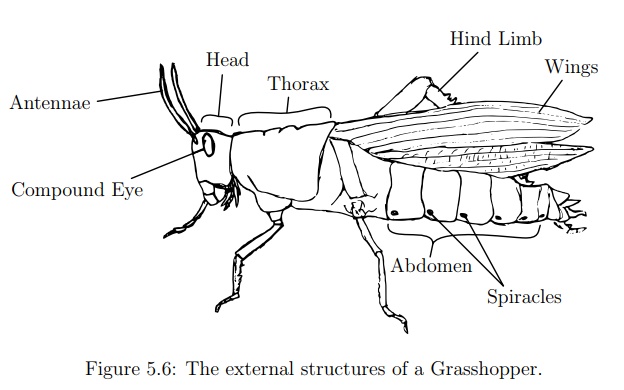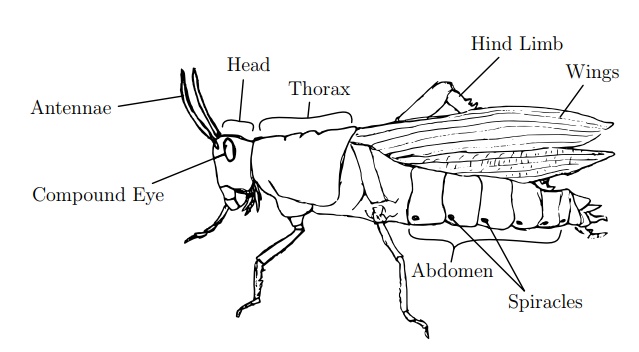Chapter: Biology Practicals: Biology Activities with Specimens
Investigation of Phylum Arthropoda

Investigation of Phylum Arthropoda
There are five classes of Arthropods: Arachnida, Chilopoda, Crustacea, Diplopoda, and Insecta. All of these organisms have jointed appendages and a hard exoskeleton. This phylum has many different varieties of or-ganisms, which have both positive and negative Effects for the human race. Some Arthropoda act as pollinators or a source of food, while others can cause humans pain and destroy crops. This activity is a introduction to Phylum Arthropoda and is most e ective when students collect the speci-mens themselves. Classifying the organisms can also be done in small groups with minimal administration from the teacher.
Learning Objectives
To explain the general features of Phylum Arthropoda.
To explain the distinctive features of each class in Phylum Arthropoda.
Materials
Variety of live and preserved specimens from Phylum Arthropoda, pictures of organisms in Phylum Arthropoda, bottle cages*, and petri dishes*.
Specimens
Instructions for collecting and preserving these specimens are described in the previous
Specimen from phylum arthropoda
Hazards and Safety
Be aware of dangerous organisms when collecting specimens in the eld. For example, some arthropods may bite or sting - care should be taken when handling them. Avoid specimens known to be poisonous.
Preservatives like formalin are poisonous and should only be handled by the teacher in a well-ventilated room.
Preparation Procedure
1. Put the specimens in bottle cages and petri dishes. Label each specimen with a marker pen. Also display any available pictures.
Activity Procedure
1. Observe the specimens.
2. Identify features common to all specimens.
3. Identify the distinctive features of each specimen.
4. Group the specimens into the five classes of Phylum Arthropoda.
5. List the general features of Phylum Arthropoda.
6. Draw and label a representative specimen from each class.
Results and Conclusions
The organisms can be easily differentiated into the five classes by observing the number of legs and antennae.

Figure 5.6: The external structures of a Grasshopper.
Clean Up Procedure
1. Collect and clean all the used materials, storing items that will be used later. No special waste disposal required.
Related Topics